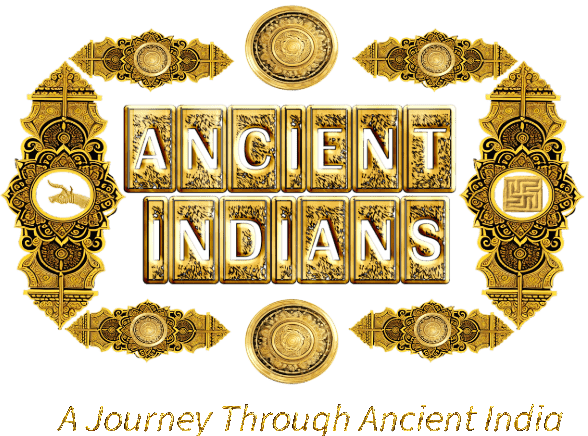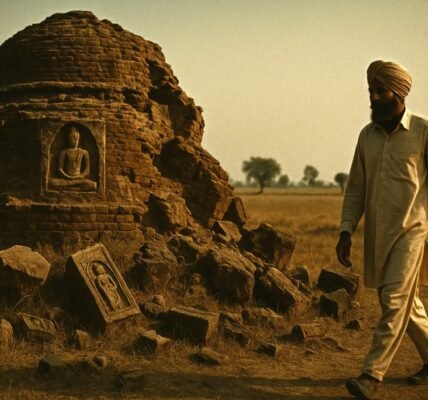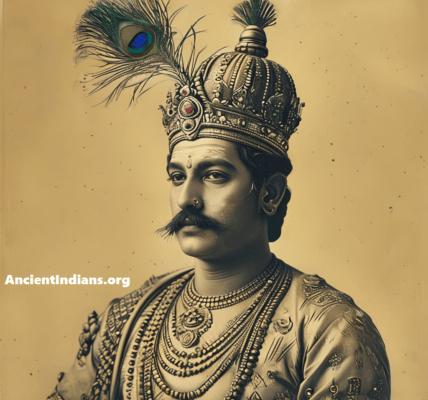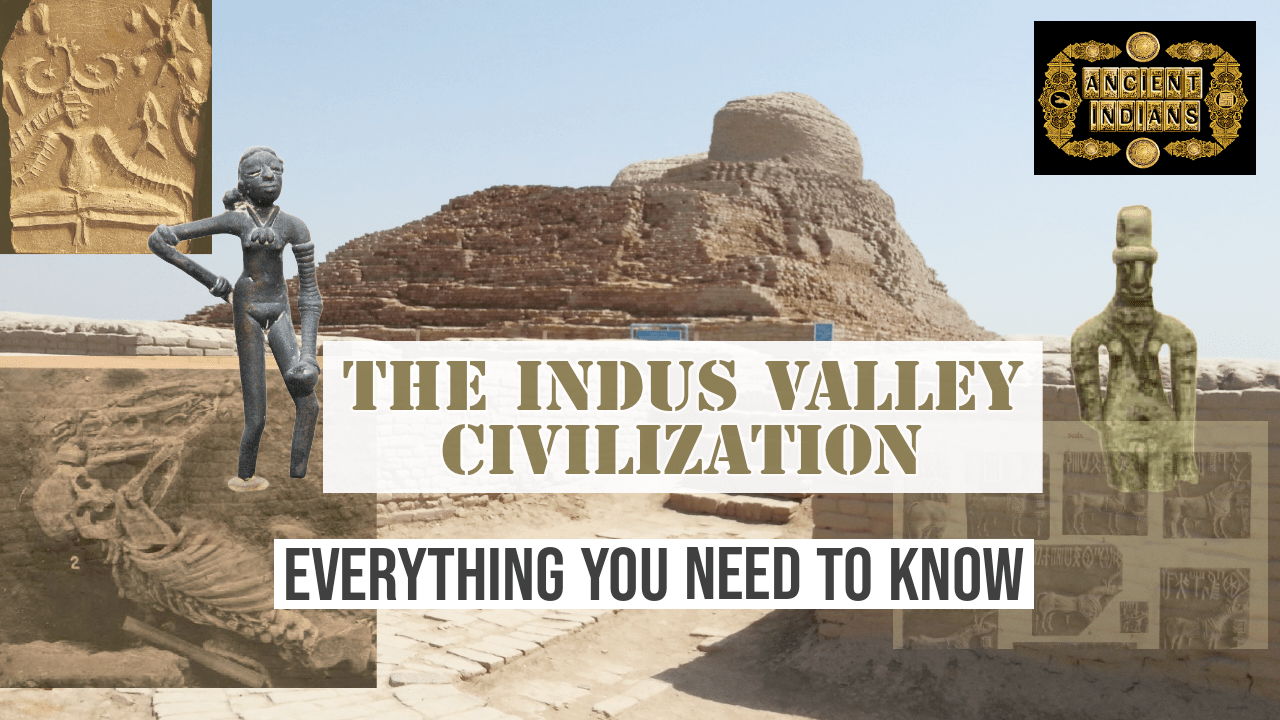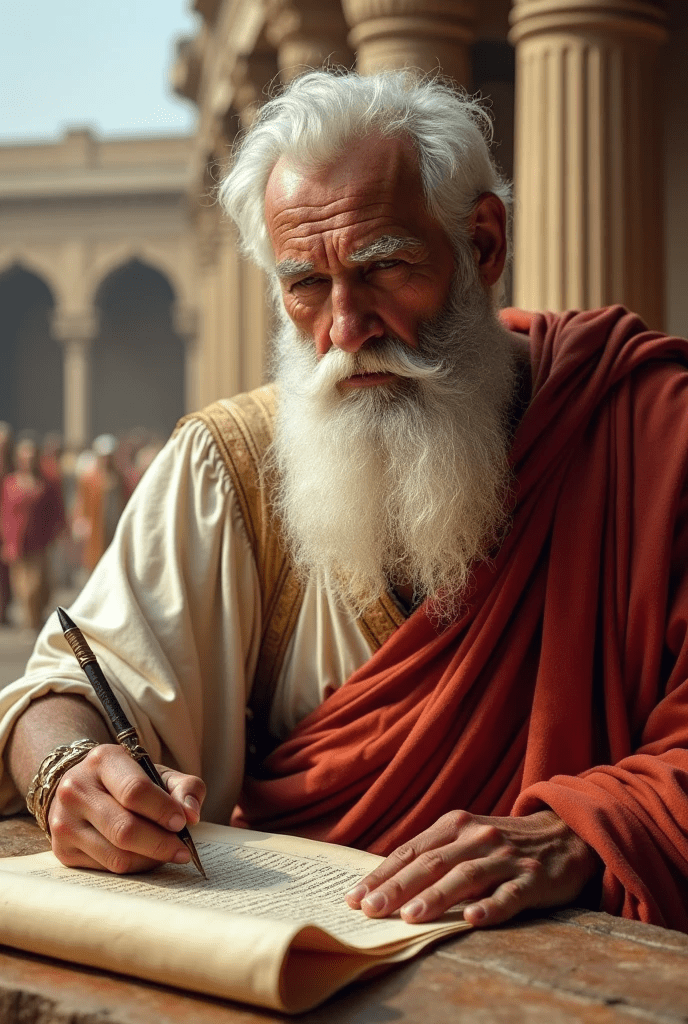
India’s history has always remained shrouded in mystery. Due to the absence of historical records by the ancient Indians, much of our understanding of their past relies on the writings of foreign visitors to India. These visitors provide us with glimpses of ancient India at specific points in time.
Among these visitors, the first and most prominent is Megasthenes.
Who Was Megasthenes?
Megasthenes was a Greek historian, diplomat, and ethnographer, best known for describing India in his book Indica while serving as an envoy of Seleucus I Nicator to the court of Chandragupta Maurya in Pataliputra (modern-day Patna).
A Little Background
After Alexander’s death, a war broke out among his generals to claim his empire. One of his generals, Seleucus I Nicator, gained control of Babylonia. This territory became the foundation for his empire, the Seleucid Empire, which consisted of a large part of Alexander’s former territory, including regions like Mesopotamia, Persia, and parts of Anatolia.

In his effort to recapture Alexander’s territories in India, Seleucus crossed the Indus River around 305 BCE but was stopped by the army of Chandragupta Maurya, the founder of the Mauryan Empire.
Chandragupta’s military prowess, particularly his use of war elephants and a large army, proved formidable. Seleucus ceded his territories in Afghanistan, northwestern India (now Pakistan), and parts of Iran to Chandragupta and entered into a treaty with the Indian king. According to the treaty, Seleucus received 500 war elephants from Chandragupta. A familial connection was also established between the two, as Seleucus married one of his daughters to Chandragupta.
Following this treaty, Seleucus sent Megasthenes to the Mauryan capital of Pataliputra (present-day Patna) to serve as his envoy at Chandragupta Maurya’s court.
It was during his time at Pataliputra (sometime between 302–298 BCE) that Megasthenes composed Indica—the first written Western account of India. Though now lost, fragmented segments of his Indica have survived in the works of later authors.
India as Described by Megasthenes in Indica
Megasthenes provides a rich and detailed account of India in his work Indica. His observations span the geography, wildlife, society, customs, and philosophical traditions of the land, blending factual descriptions with mythological elements to paint a vivid picture of the ancient Indians.
A Land of Natural Abundance
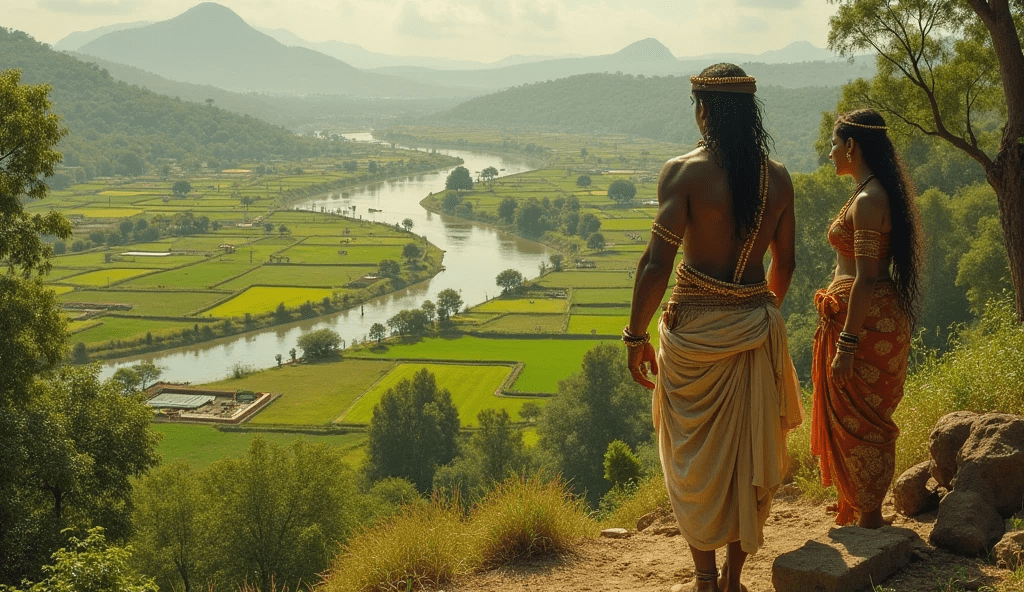
in fruit-trees of every kind, and many vast
plains of great fertility — more or less beautiful,
but all alike intersected by a multitude of rivers.” (Image: AI rendition by Author)
India, as described by Megasthenes, is a land of extraordinary abundance and sophistication. According to him it is a country “abounding in fruit-trees of every kind” and possessing “vast plains of great fertility.” The Ganges and Indus are the most prominent rivers, with the former flowing from north to south and the latter marking the western boundary of India. These rivers, along with numerous tributaries, provide an abundant water supply, enabling the land to yield two harvests annually. Megasthenes highlights that the soil of India is so fertile and the agricultural practices so advanced that “famine has never visited India,” even in times of adverse conditions.
Rich Flora and Fauna
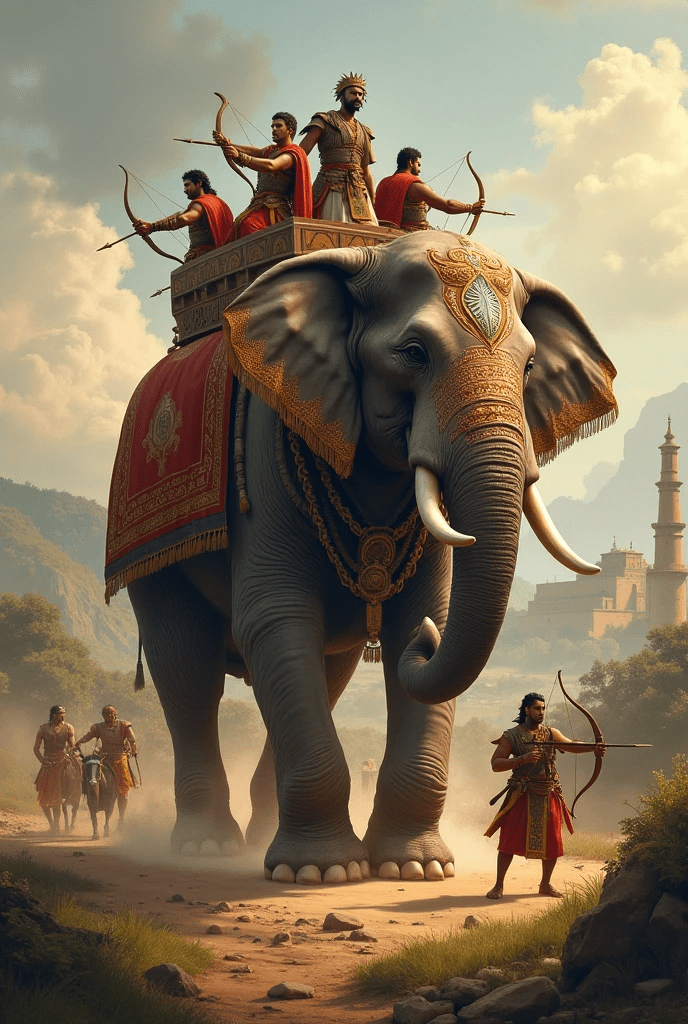
India is also home to an astonishing variety of wildlife. Elephants, essential to Indian warfare, are described as surpassing all others in size and strength. Trained with extraordinary care and intelligence, they play a critical role in warfare, often saving their masters in battle.
Tigers twice the size of lions, monkeys larger than dogs, and mythical creatures like winged serpents and the one-horned Kartazon embodies the blend of observation and myth that characterizes many of Megasthenes’ accounts. Ebony trees and other valuable natural resources further enrich the landscape. As Megasthenes remarked, “India is a land teeming with animals of all kinds and sizes, both useful and formidable.”
A Prosperous and Skilled People
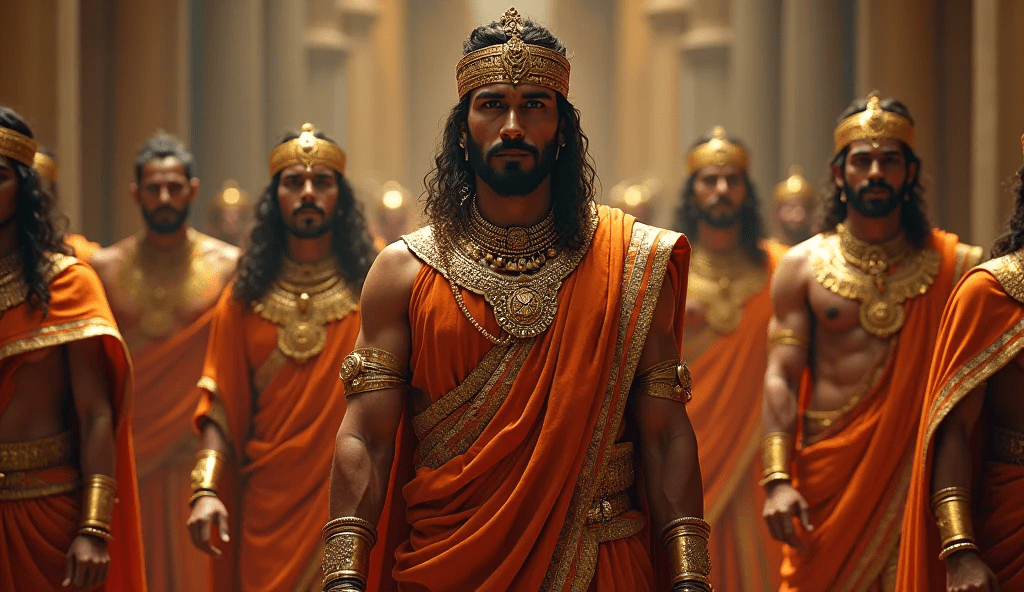
The inhabitants of India, Megasthenes observes, are tall, proud, and skilled in various arts. They enjoy pure air and clean water, which contribute to their health and vitality. The people are not only self-sufficient but also excel in crafts, agriculture, and metalwork. The land is rich in minerals, including gold, silver, copper, and iron, which are used for both utilitarian and ornamental purposes.
Social Organization
The population is organized into seven castes:
- Philosophers – Revered for their wisdom, exempt from public duties, and serving as advisors.
- Husbandmen – Farmers dedicated to agriculture, exempt from military service.
- Herdsmen – Protectors of livestock and hunters of pests.
- Artisans – Makers of tools and goods, supported by the royal treasury.
- Soldiers – Maintained at the king’s expense, holding a prominent status.
- Overseers – Supervisors of public administration.
- Councillors – Advisors and arbiters of disputes.
Absence of Slavery

Remarkably, Megasthenes observes, “The Indians are all free, and not one of them is a slave,” a stark contrast to the practices of the ancient Greeks and other ancient civilizations.
Pataliputra – The Majestic City
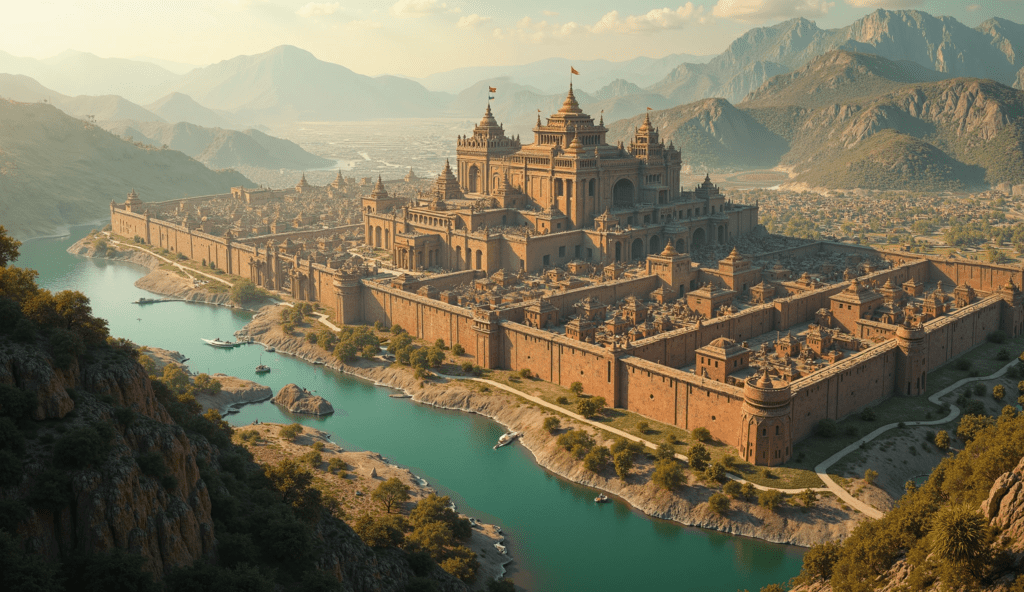
Pataliputra, the capital of the Prasii kingdom, is described as a vast and prosperous city “surpassing all other cities in its wealth and grandeur.” Situated at the confluence of the Ganges and Erannoboas (Sone) rivers, the city spans 80 stadia in length and 15 stadia in breadth. It is fortified with a wooden wall, 570 towers, and 64 gates, surrounded by a massive ditch for defense and sewage. The city’s military strength is equally impressive, with a standing army of 600,000 infantry, 30,000 cavalry, and 9,000 elephants, reflecting the vast resources and organizational skills of the Mauryan Empire.
Unique Social Customs and Governance
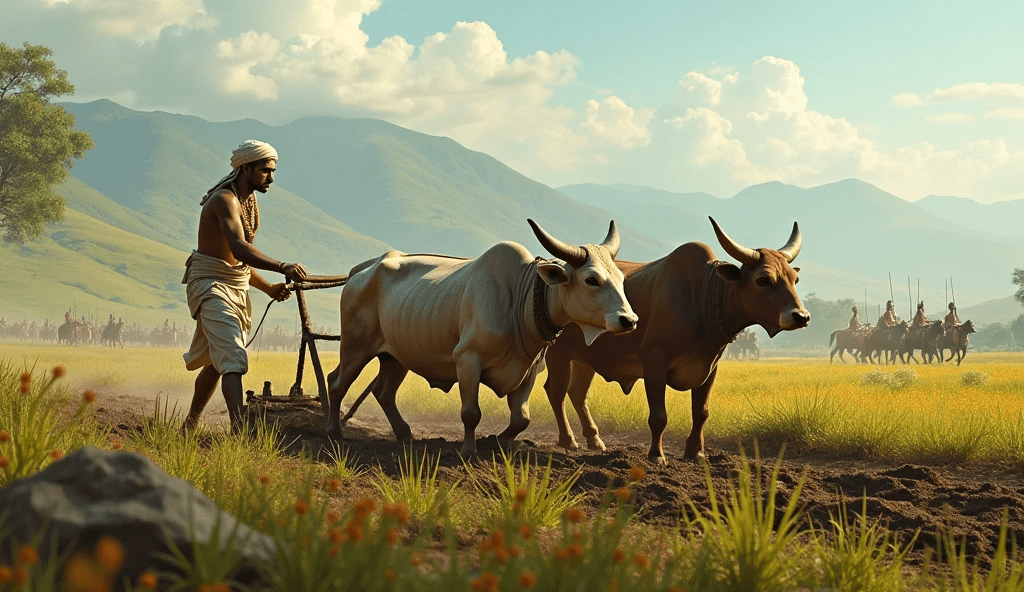
Megasthenes also provides detailed insights into Indian customs. Indians live frugally and uphold truth and virtue. Theft is rare, and property is often left unguarded, reflecting their trust and moral integrity. The simplicity of their laws is evident as there are no written contracts.
The king plays a central role in governance, maintaining a massive standing army and ensuring the welfare of his subjects. Public officials oversee markets, trade, and irrigation, ensuring that resources are equitably distributed. Even in times of war, husbandmen are unharmed by the warring parties, ensuring that agriculture remains uninterrupted.
City officials manage trade, maintain public buildings, and oversee the welfare of foreigners, ensuring a well-regulated society. Markets and trade are closely monitored, and weights and measures strictly regulated. Military divisions include specialized units for infantry, cavalry, chariots, and elephants, with royal facilities maintaining weapons and animals.
The Role of Philosophy and Religion
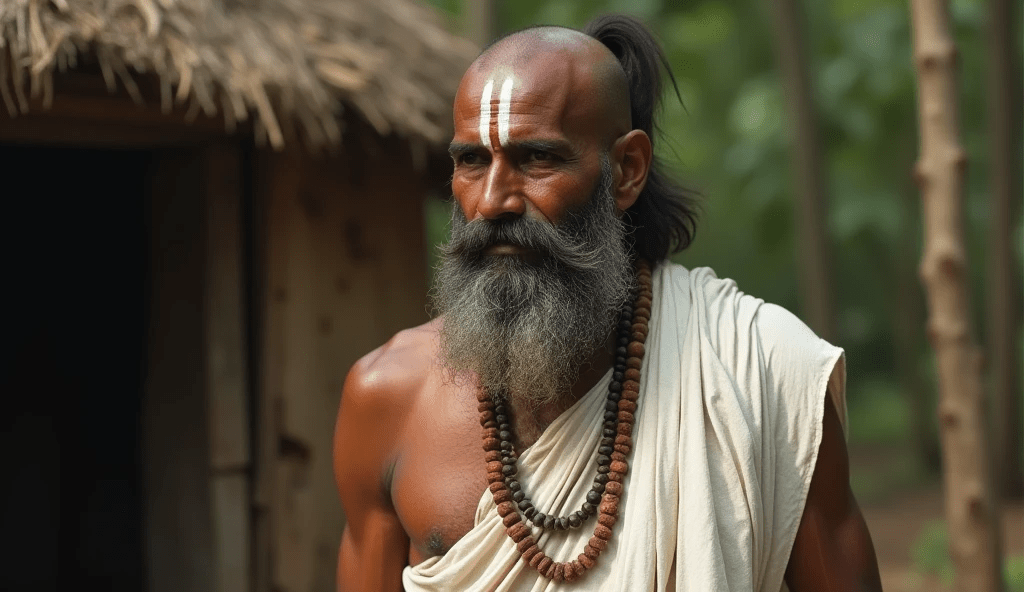
Philosophy holds a special place in Indian society. As Megasthenes noted, “The philosophers are held in highest esteem, exempt from public duties, and revered for their wisdom and spiritual guidance.” The philosophers, or Brahmans, are revered for their wisdom and spiritual knowledge. They abstain from material pleasures and devote their lives to teaching, meditating, and guiding others. The Sarmanes, another group of philosophers, live in simplicity, often in forests, and are consulted by kings for their insights.
A Mythical and Fascinating Land

Megasthenes’ account also includes mentions of mythical tribes and creatures, reflecting the intrigue India held for foreign travelers. These myths likely appealed to Greek audiences due to their own rich tradition of mythology, making India appear as an exotic and mysterious land that mirrored the fantastical tales of their homeland. He describes tribes with unique physical features and abilities, as well as fantastical animals like fox-sized gold-digging ants and enormous serpents. These tales, though improbable, underscore the sense of wonder that India inspired.
Significance of Indica
Indica was the first Western eyewitness account of India. Most westerners, including the ancient Greeks, had many misconceptions and limited understanding of India. The ancient Greeks confused it with “Eastern Ethiopia” due to vague and mythical conceptions. Although the Greek historian Herodotus (5th century BC) was the first to write about India, his account was scant, vague, and based largely on hearsay, as he never visited the country himself.
Indica, for the first time, provided a more concrete and detailed account of India, countering earlier misconceptions. Although the lost fragments of Indica make no mention of Indian literature and offer little information about religion, by documenting India’s geography, culture, trade, and society, Indica offered the ancient world its first systematic understanding of India, helping bridge the knowledge gap between India and the Western world.
Source:
McCrindle, J. W. (1877). Ancient India as Described by Megasthenes and Arrian. Thacker, Spink & Co.
